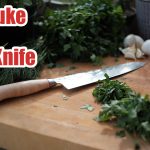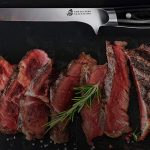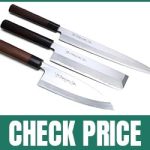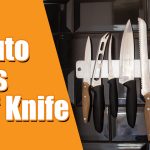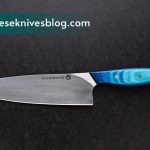Have you ever seen a knife on a table, you will see that it is not a normal knife, it looks heavy and clumsy. So, how do you hold a knife?
You might be thinking that you are holding a knife and not holding a knife, but the fact is, you need to hold the knife properly, else it can damage your hands and fingers.
How to Hold a Knife
Table of Contents
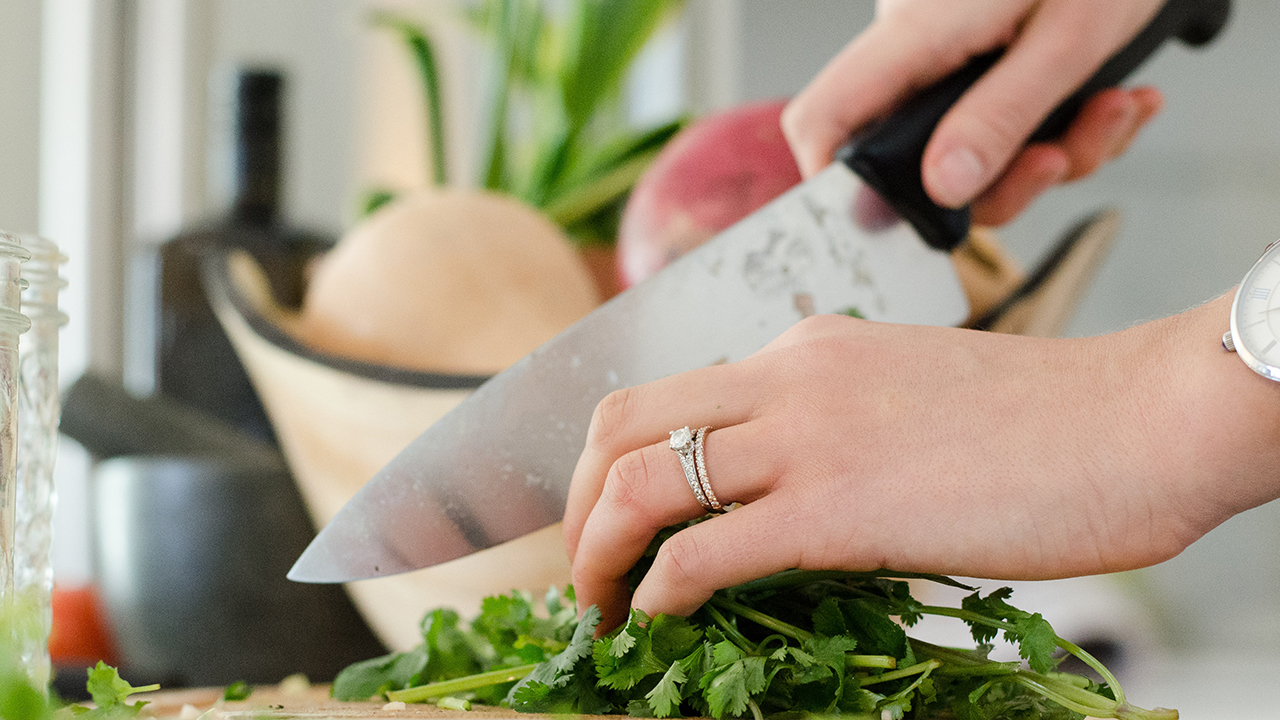
The first thing that will strike your mind is that it is not easy to hold a knife, but I would say it is very easy and simple. It is very important that you don’t grip the handle of the knife, but hold the blade of the knife.
First thing that you need to do is that you need to put the tip of your index finger on the tip of the blade and then you need to bend your thumb towards the side and hold the blade by the tip of your thumb.
Holding a knife
Now, place the other hand on the handle of the knife, the next thing that you need to do is that you need to place your middle finger on the base of the handle and then your ring finger will cover the remaining space.
Then you need to press your thumb on the tip of the handle and your index finger on the base of the handle, and then you need to squeeze the handle.
4 Most Effective Tips to Hold a Knife
How to hold a knife is the most common question asked by the beginners in the kitchen. A knife is a tool that is used to cut, slice, and carve food items. The knives are available in various sizes and types, so there is a knife for almost every task.
How to hold a knife is the most important thing that you need to learn before starting to cut the food. There are a lot of people who don’t know how to hold the knife, so this is the reason why they are in a mess while cutting the food.
Here are some of the most effective tips for holding the knife.
Hold the knife in a natural way
It is the most common mistake that people do while holding the knife. They try to hold the knife in a specific way, but the natural way is the best way to hold the knife.
First of all, you need to grip the handle of the knife with your thumb and index finger, but the thumb should be placed on the back side of the knife and the index finger should be placed on the front side of the knife.
Now, hold the knife with your index finger and middle finger and press it with your thumb and you will feel comfortable.
Keep the knife close to your body
As a beginner, you need to keep the knife close to your body to avoid any accident. Always keep the knife close to your body when you are cutting the food.
Always keep your hand at a distance of 2 inches from the blade of the knife. The closer you get to the blade, the more dangerous the situation is.
You need to hold the knife in such a way that the blade is parallel to the board.
Keep the knife in your dominant hand
If you are right-handed then keep the knife in your right hand, but if you are left-handed, then keep the knife in your left hand.
Don’t be too aggressive
The most common mistake that people do while holding the knife is that they are too aggressive and they try to cut the food by pressing the knife on the food.
How to Hold a Japanese Knife
Best Japanese knives are very famous for its quality and the reason behind this is that the Japanese people are very careful in making the knives.
They have been doing this since centuries, and you will be amazed to know that they even made a knife in the year 1615. The knife was named as “Takanotoshi” which means “the sword that cuts the wind”.
You might be thinking that what are the benefits of Japanese knives and why are they so famous?
Let us take a look at the benefits of Japanese knives:
It is very durable
The Japanese people are very careful while making the knives. They make the knives by following certain techniques, and this makes the knives more durable.
The durability of the knife is because of the fact that the blade is made by cutting and grinding the steel which is very strong and hard. The blade is also covered with the layer of lacquer which is used to protect the blade from any kind of damage.
It is very sharp
The Japanese knives are extremely sharp and the reason behind this is that the blades are ground with a very sharp stone. The blades are also hardened with the help of fire.
The knife is very sharp and it is also easy to sharpen. The sharpening of the blade is done with the help of the honing rod and the sharpening is done by rubbing the knife with the honing rod.
It is very easy to clean
The Japanese knives are easy to clean as compared to other knives. The reason behind this is that the blade is made of a stainless steel and therefore it is very easy to clean.
You just need to wipe it with a wet cloth and it is ready to use. The blade is also made of a thin steel which is easy to clean.
It is very light
Another benefit of Japanese knives is that it is light in weight. The reason behind this is that the Japanese people make the knives by following certain techniques and this makes the knives light in weight.
These are the top benefits of Japanese knives. If you are looking for a knife then you can get the best Japanese knife for your kitchen.
How to Hold a Cleaver
Top 10 Hacks To Hold a Cleaver
For those who are new to this kind of cooking, you may not be aware of the different types of kitchen knives available. If you have ever been around the kitchen, then you probably know that there are a lot of different knives and it can be confusing to choose the right one.
There are several types of kitchen knives, the most common ones are the carving knife, the paring knife, the boning knife, the chef’s knife, the bread knife, the bread knife, and the cleaver.
1. Carving Knife
The carving knife is used to cut meat and vegetables. The advantage of this knife is that you can use it for any kind of food. If you are planning to cook a steak, then this is the best knife to use.
2. Paring Knife
The paring knife is used to slice vegetables and fruits. It is very sharp and it is great for cutting herbs and vegetables.
3. Boning Knife
The boning knife is used to remove bones from meat. This knife is very sharp and you can easily cut the bones without any effort.
4. Chef’s Knife
The chef’s knife is the most common knife. You can use this knife to cut almost anything. This is the most important knife when you are cooking because it is a multi-purpose knife.
5. Bread Knife
The bread knife is used to cut bread. This knife is very thin and sharp and it is good for cutting crusts and cutting bread slices.
7. Cleaver
Best Cleaver Knives are the hardest knife to hold. This is a heavy knife that is used for chopping hard and tough meats.
Choosing the right knife can be a challenge, but you can easily figure out which one is the best for you. If you are new to cooking, then you should start with the carving knife, and once you get the hang of it, you can slowly add other knives to your kitchen.
Conclusion
We hope these tips will help you to get the best of your knife and cut the food without any accident.

Hi, This is Sophia Ava, author of many books about Knives that uses many chefs in their shows, received my MFA in Creative Writing from Mills College is a famous Chef. Born in Oakland, California.As a expert chef i have written blogs and knives reviews that i tested by my own with the partnership of famous brands for their famous knives. With my well researched artilces and reviews about knives you can make your kitchen life easier.




